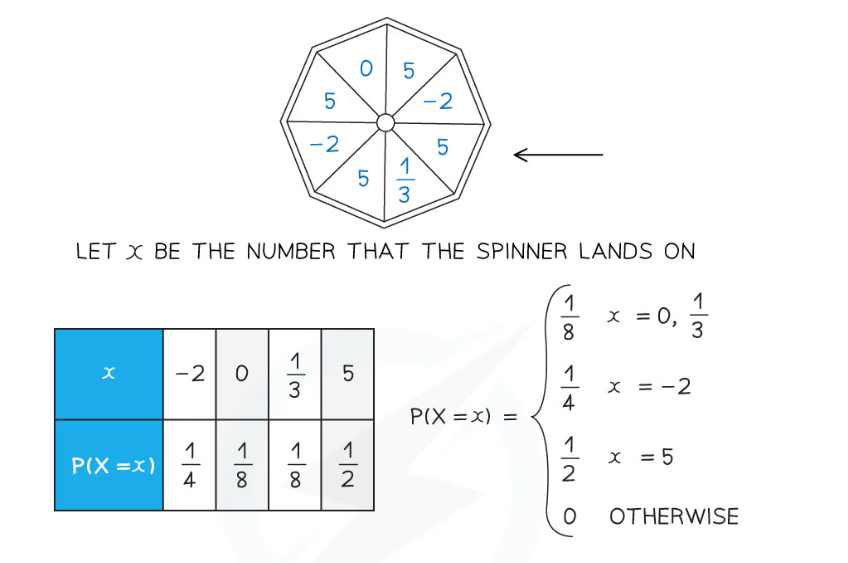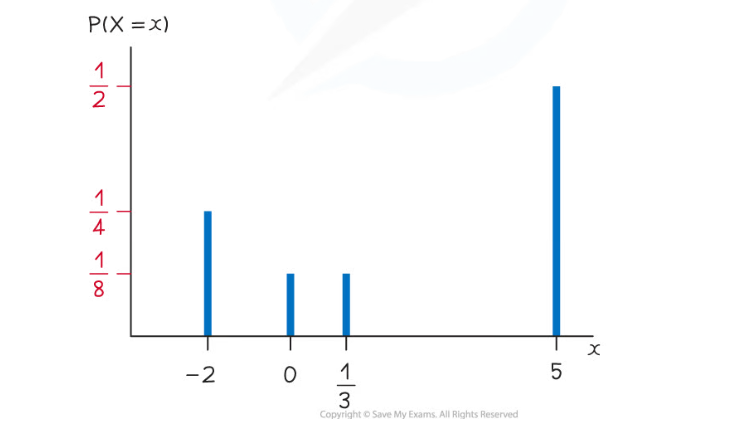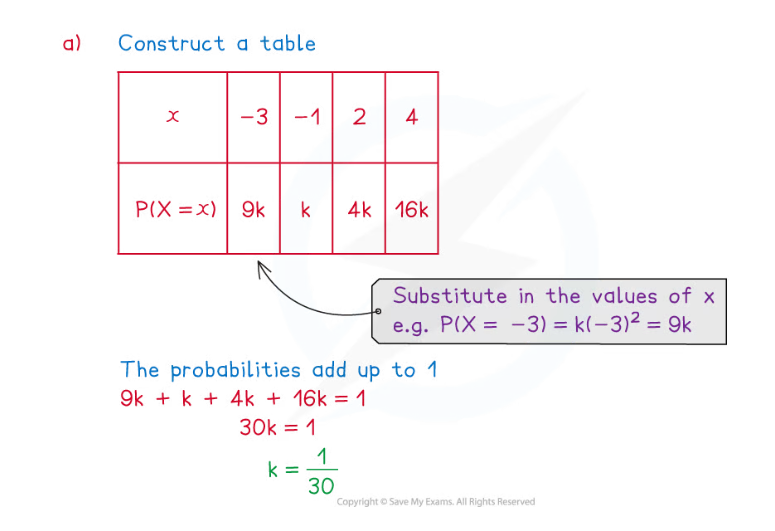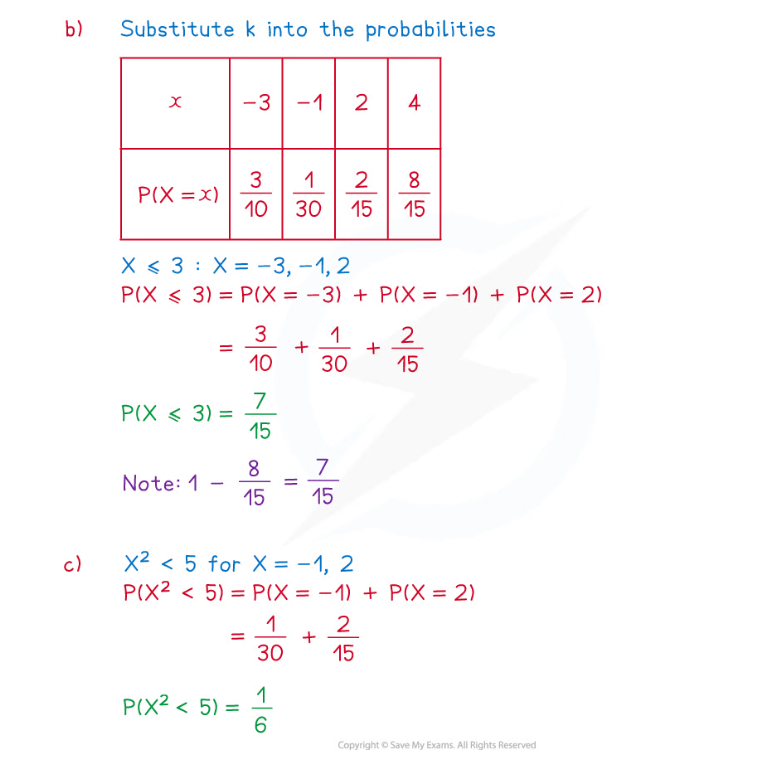- 翰林提供学术活动、国际课程、科研项目一站式留学背景提升服务!
- 400 888 0080
Edexcel A Level Maths: Statistics:复习笔记4.1.1 Discrete Probability Distributions
Discrete Random Variables
What is a discrete random variable?
- A random variable is a variable whose value depends on the outcome of a random event
- The value of the random variable is not known until the event is carried out (this is what is meant by 'random' in this case)
- Random variables are denoted using upper case letters (X , Y , etc )
- Particular outcomes of the event are denoted using lower case letters ( x, y, etc)
 means "the probability of the random variable X taking the value
means "the probability of the random variable X taking the value  "
"- A discrete random variable (often abbreviated to DRV) can only take certain values within a set
- Discrete random variables usually count something
- Discrete random variables usually can only take a finite number of values but it is possible that it can take an infinite number of values (see the examples below)
- Examples of discrete random variables include:
- The number of times a coin lands on heads when flipped 20 times
(this has a finite number of outcomes: 0,1,2,…,20) - The number of emails a manager receives within an hour
(this has an infinite number of outcomes: 1,2,3,…) - The number of times a dice is rolled until it lands on a 6
(this has an infinite number of outcomes: 1,2,3,…) - The number on a bingo ball when one is drawn at random
(this has a finite number of outcomes: 1,2,3…,90)
- The number of times a coin lands on heads when flipped 20 times
Probability Distributions (Discrete)
What is a probability distribution?
- A discrete probability distribution fully describes all the values that a discrete random variable can take along with their associated probabilities
- This can be given in a table (similar to GCSE)
- Or it can be given as a function (called a probability mass function)
- They can be represented by vertical line graphs (the possible values for
 along the horizontal axis and the probability on the vertical axis)
along the horizontal axis and the probability on the vertical axis)
- The sum of the probabilities of all the values of a discrete random variable is 1
- This is usually written

- This is usually written
- A discrete uniform distribution is one where the random variable takes a finite number of values each with an equal probability
- If there are n values then the probability of each one is

- If there are n values then the probability of each one is
Cumulative Probabilities (Discrete)
How do I calculate probabilities using a discrete probability distribution?
- First draw a table to represent the probability distribution
- If it is given as a function then find each probability
- If any probabilities are unknown then use algebra to represent them
- Form an equation using

- Add together all the probabilities and make the sum equal to 1
- To find

- If is a possible value of the random variable X then
 will be given in the table
will be given in the table - If
 is not a possible value then
is not a possible value then 
- If is a possible value of the random variable X then
- To find

- Identify all possible values,
 , that X can take which satisfy
, that X can take which satisfy 
- Add together all their corresponding probabilities

- Some mathematicians use the notation F(x) to represent the cumulative distribution
- Identify all possible values,
- Using a similar method you can find

- As all the probabilities add up to 1 you can form the following equivalent equations:
- To calculate more complicated probabilities such as

- Identify which values of the random variable satisfy the inequality or event in the brackets
- Add together the corresponding probabilities
How do I know which inequality to use?
 would be used for phrases such as:
would be used for phrases such as:
- At most k, no greater than k, etc
 would be used for phrases such as:
would be used for phrases such as:
- Fewer than k
 would be used for phrases such as:
would be used for phrases such as:
- At least k , no fewer than k, etc
 would be used for phrases such as:
would be used for phrases such as:
- Greater than k, etc
Worked Example
The probability distribution of the discrete random variable is given by the function

(a) Show that 

(b) Calculate ![]()
(c) Calculate 
Exam Tip
- Try to draw a table if there are a finite number of values that the discrete random variable can take
- When finding a probability, it will sometimes be quicker to subtract the probabilities of the unwanted values from 1 rather than adding together the probabilities of the wanted values
- Always make sure that the probabilities are between 0 and 1, and that they add up to 1!
转载自savemyexams

最新发布
© 2026. All Rights Reserved. 沪ICP备2023009024号-1













